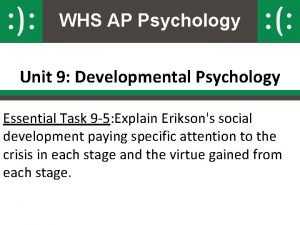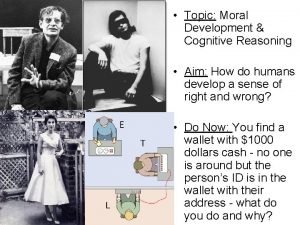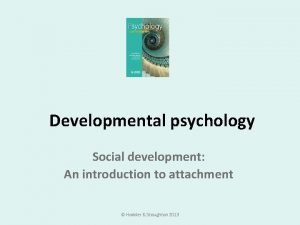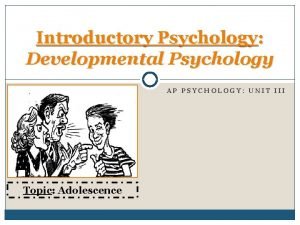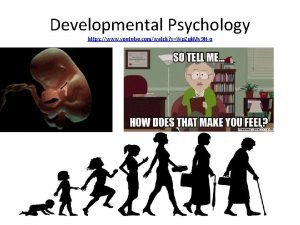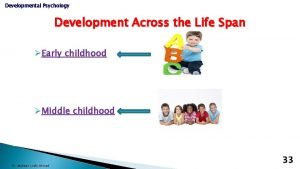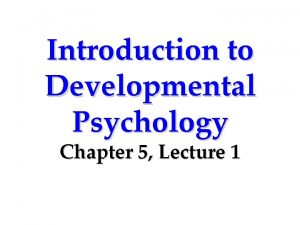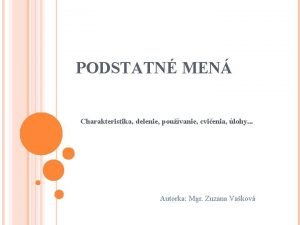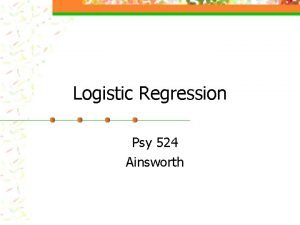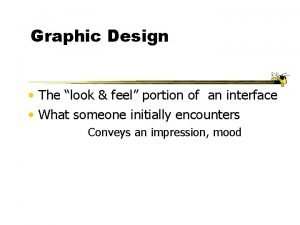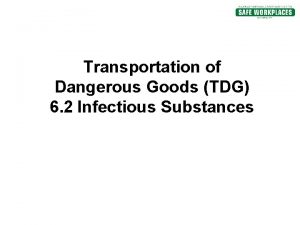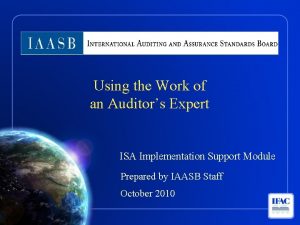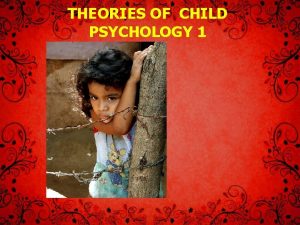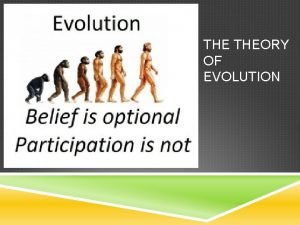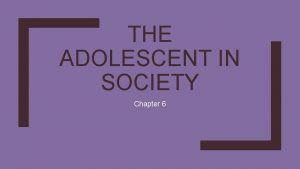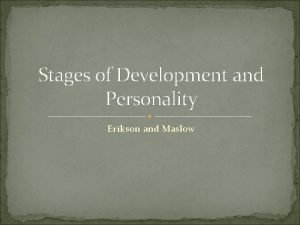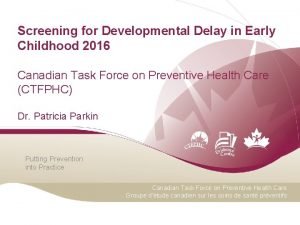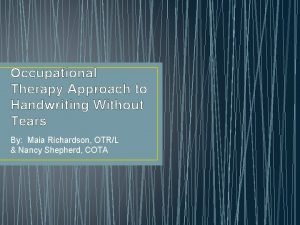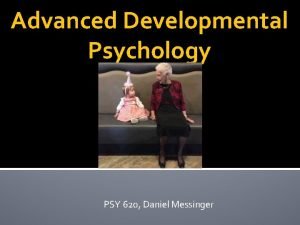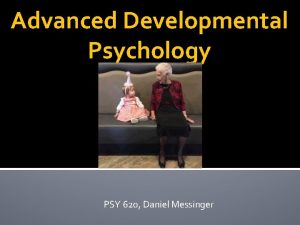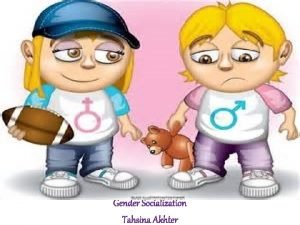Advanced Developmental Psychology PSY 620 P Socialization Processes






















































![Analytic Plan � Discrete-time survival analyses Measure the occurrence and timing of events [dissolution] Analytic Plan � Discrete-time survival analyses Measure the occurrence and timing of events [dissolution]](https://slidetodoc.com/presentation_image_h/05e015aa67c6d64d9523423c41b76a64/image-55.jpg)









- Slides: 64

Advanced Developmental Psychology PSY 620 P

Socialization Processes �Parent-child relationships �Peer relationships �School and community influences

Peer Relationships - Overview �Peer sociality overview �Development of social participation (Parten) �Friendships �Peer Groups �Acceptance vs. Rejection Causes and Consequences �Peer victimization Deviant peer affiliation thru externalizing �Friends Protective effects Friendship dissolution

Theories �Sullivan emphasized pre-adolescent chumships as foundation of intimacy and precursor to romantic coupling �Piaget emphasized moral development occurring during give-and-take with peers (rather than obedience to, or rebellion against, adults) 2/21/2021 Messinger 4

Peer Relationships �Kids are interested in kids �Preferring peers to adults early on and more dramatically with development Finding appropriate models for their developmental niche ▪ Fundamentally neglected area of research ▪ College?

Early development �Infants have rudimentary abilities (to 1 yr) I. e. , increased gazing at peers �Toddlers Imitate and are aware of being imitated ▪ Sister dance https: //www. youtube. com/watch? v=mfz. D_kw. UXw. M ▪ Toddler imitates Rocky, https: //www. youtube. com/watch? v=y. Ct 89 VSRe 4 w ▪ ▪ ▪ Babies imitating fathers https: //www. youtube. com/watch? v=-y 4 XHz 4 d 6 UU Baby copies brother (prompted) https: //www. youtube. com/watch? v=4 AQMyg. Jwut. Q Baby copies brother poetry recital https: //www. youtube. com/watch? v=Tx. Eb. MDLTwlk Have reciprocal relationships with specific kids 2/21/2021 Messinger 6

Early childhood � Types of play Unoccupied, solitary, on-looking, parallel, associative, cooperative Parallel play is important transitional activity Pretend play emerges (inter-subjectivity) � Friendship emerges More prosocial & aggressive behavior occurs with friends � As do dominance hierarchies 2/21/2021 Messinger 7

Developmental changes in nature of play behavior (Parten, 1932)

Middle childhood & school �Peer interaction rises and changes 10% (3 y olds) to 30% (middle childhood) Peer group increases and is less supervised �Friendship develops Friends more likely to resolve conflicts with eye toward protecting relationship �Groups emerge As does understanding of role and status in group 2/21/2021 Messinger 9

Adolescence � 29% of waking time with peers Out of classroom � Friendship Autonomy granting and increased intimacy � Groups Single sex cliques mesh into looser mixed-sex groups � Crowds Druggies, loners, brains, jocks Increasingly prominent aspect of social life 2/21/2021 Messinger 10

Peer Relations �Is a child who spends a lot of time playing alone necessarily at risk? ▪ Examples of different forms of nonsocial play




Social Reticence Trajectories 3 Class Model of Social Reticence Trajectories • High-Stable (n=43, 16% of sample): High level of social reticence at 2 years, with consistently higher levels and small increase over time • High-Decreasing (n=112, 43% of sample): High level of SR at 2 years, with significant decrease over time • Low-Increasing (n=107, 41% of sample): Lower level of SR at 2 years, with significant increase but still consistently low SR over time

BI Probability of SR Trajectory • As BI increases, probability of High-Stable & High-Decreasing SR trajectories rises – probability of Low-Increasing SR trajectory decreases • BI did not differentiate between High-Stable and High. Decreasing

SR Trajectory Predicts Psychopathology Symptoms • High-Stable SR trajectory predicted greatest internalizing problems • Low-Increasing SR trajectory predicted greatest externalizing problems • High-Decreasing SR trajectory predicted least problems

Distinguishing conflicted shyness from social disinterest @ 3 -5 years � Conflicted Shyness High approach + high avoidance Want to play, but are too fearful or anxious ▪ Overprotective parenting may be a contributing factor. ▪ Related to later maladjustment ▪ Puts boys at greater risk than girls � Social Disinterest E. g. , Three forms of social withdrawal in early childhood. Coplan & Armer Prefer to play alone but willing to engage Low approach + low avoidance ▪ Often not distinguished from shyness ▪ Participation in solitary activities later internalizing

National social context effects �Pronounced role of peer group in Cuban society regulating social behaviors. Withdrawal associated with loneliness Cuba > Canada Aggression a correlate of loneliness in Cuba � Social withdrawal and maladjustment in a very group-oriented society. Valdivia, Ibis Alvarez; Schneider, Barry H. ; Chavez, Kenia Lorenzo; Chen, Xinyin International Journal of Behavioral Development. Vol 29(3), May 2005, 219 -228. 2/21/2021 Messinger 30

Classroom Context “Children with an early childhood history of anxious solitude were more rejected, poorly accepted (boys), and victimized (girls) by peers and demonstrated more depressive symptoms (girls) in 1 st-grade classrooms with a negative observed emotional climate. ” Messinger

Peer group as socialization context Cooperative activity in support of collective goals Skills associated with leading and following Regulation aggression/hostility Group loyalty

Peer Groups: Cliques vs. Crowds � 5 or 6 same-sex peers �Middle childhood cliques Provide psychological support for autonomy Intimate, friendship-based groups �Adolescence larger crowds Provide context for identity formation Reputation-based groups Defined by shared attitudes and activities Less intimate

Social status: Sociometric nominations � Each child in class asked to name 3 - 5 peers: High Disliking (Rejection) Controversial Kids Rejected Kids Like the most Like the least Low Liking High Liking (Acceptance) Neglected Kids Low Disliking 2/21/2021 Messinger Popular Kids

Neglected, popular �Neglected kids Less interaction of all types Social competence reports = average kids �Popular kids High prosocial behaviors, low aggression �Rejected kids 40=50% are aggressive 2/21/2021 Messinger 35

Behavioral Correlates of Peer Acceptance �Sociometrically Neglected Shy/withdrawn; few interactions with peers But not necessarily associated with anxiety or extreme withdrawal �Sociometrically Controversial Mix of positive and negative social behaviors

Behavioral Correlates �Sociometrically Rejected Often due to aggression ▪ Forms of aggression? Other reasons for rejection?

Peer Acceptance and Social Cognition � Social information processing � Differences based on sociometric classifications? See Rubin & Krasnor, 1986; Crick & Dodge, 1994

Social Exclusion: Hypothetical Stories vs. Observed in Lab • “What would you do? ” • Responses coded as: • Assertive • Indirect • Withdrawal • Redirect � Real life exclusion – Ball Toss Game � What does child do? • Responses coded as: • • • Assertive Indirect Withdrawal Redirect Video examples

Peer Acceptance – Methodologies �Peer-perceived popularity Select kids in your class you think are: ▪ Popular ▪ Unpopular �Little agreement between sociometric ratings and perceived popularity ratings Why?

Popularity within Peers � Sociometrically popular: Tim Well liked by others High prosocial & cooperative behaviors Low aggressive behaviors � Perceived popular: Jason Well known, socially central & emulated High prosocial behaviors High aggressive & antisocial behaviors Fernandez

Contributing factors to individual differences in peer relationships � Temperament Difficult temperament Emotion regulation Shyness/Inhibition � Parenting Attachment and internal working models of interpersonal relationships Specific parenting behaviors ▪ Facilitating opportunities for peer interaction ▪ Socialization processes

Rudolph et al. (2014) Peer Victimization and Social Alienation: Predicting Deviant Peer Affiliation in Middle School

Study 1 Methods �Participate when child entered kindergarten � 3 rd /4 th grade interviews assess peer victimization � 6 th grade interview-- social loneliness/ dissatisfaction � 7 th grade interview--best friend antisocial behavior �Parent-report of internalizing/externalizing behavior Rebecca Grossman 3/29/16

Peer Victimization (PV) Study 1: Social Alienation Deviant Peer Affiliation (DPA) Rudolph et al. , 2014 Rebecca Grossman 3/29/16

Internalizing/ Externalizing Peer Victimization Social Alienation DPA Study 2 Results Rudolph et al. , 2014 Rebecca Grossman 3/29/16

PV leads to social alienation and DPA in middle school �Victimized children may be rejected from mainstream social groups Results in subjective loneliness and behavioral helplessness �Social alienation predicted later affiliation with antisocial peers in middle school Rebecca Grossman 3/29/16

Schwartz et al. (2014) Peer Victimization During Middle Childhood as Lead Indicator of Internalizing Problems and Diagnostic Outcomes in Late Adolescence Martinez de Andino 2017

Peer Victimization (PV) can have adverse effects �Moderate links between PV and symptoms of depression, anxiety, loneliness, and social withdrawal �Compelling evidence of short-term associations Martinez de Andino 2017

Methods � 388 children (198 boys, 190 girls) �PV: ~8. 5 years old �Internalizing behavior problems: assessed in 9 consecutive years (~8 - ~18 years old) �Structured clinical interview: ~18. 5 years old Martinez de Andino 2017

Peer victimization (PV) Depression Martinez de Andino 2017

PV internalizing and depression �PV in middle childhood associated with internalizing problems through late adolescence. �PV associated with an increase in internalizing problems over time �PV in middle childhood indexes long-term risk for internalizing behavior problems and unipolar depression. Martinez de Andino 2017

Friendships �Friendships provide: Support Emotional security Intimacy Instrumental and informative assistance Growth of interpersonal sensitivity Prototypes for later romantic & marital relationships Practice with conflict resolution

Friendship development Behaviors with friends differ vs. with non-friends from early ages Children’s understandings of friendships change with development (Bigelow & La. Gaipa, 1980) ▪ Content analysis of ‘describe what a best friend should be’ essays ▪ Reward-cost stage (7 -8 yrs) ▪ E. g. , proximity ▪ Normative stage (10 -11 yrs) ▪ E. g. , nice ▪ Empathic stage (11 -13 yrs) ▪ E. g. , loyal

Friendships (cont) �In early childhood friends are similar in terms of observable characteristics Age, sex, racial/ethnic background, behavioral tendencies �By adolescence friends are similar in terms of attitudes School, academic aspirations, use of drugs/alcohol

Presence of a mutual best friend as a protective factor � Most children have at least one friend, BUT 15% estimated to be chronically friendless Associated with increased loneliness, poor self-esteem � Hodges et al. (1999); victimization predicts behavior only for children without a best friend � Although stable friendships can also have negative problems consequences depending on characteristics of the friend

• For unfriended children, initial social isolation increases in internalizing and externalizing; • Initial internalizing and externalizing subsequent increases in social isolation. • Among friended children, no prospective associations between social isolation and internalizing or externalizing problems. Farhat

Friends don’t let friends… internalize & externalize Farhat

Modeling homophily over time with an actorpartner interdependence model Popp, D. , Laursen, B. , Kerr, M. , Stattin, H. , & Burk, W. (2008). Developmental Psychology, 44(4), 1028 -1039. � Why do friends engage in similar deviant behavior? Socialization: friends influence behavior Homophilic selection: deviant kids choose deviant friends � Evidence for selection effect Higher similarity in deviant behavior pre-friendship � Evidence for socialization effect Increased deviant behavior controlling for pre-friendship levels � Difficulty in disentangling unique contributions Friends behave interdependently, i. e. behaviors are not statistically independent Actor-partner interdependence model (APIM) takes this into account Fuccillo

Actor-partner interdependence model Control for “partner” influence Control for additional unobserved sources of similarity (socialization) Control for initial similarity (selection) Control for “actor” stability � 7 th & 10 th graders in small Swedish city Nominated 3 important peers on 3 consecutive years Reported frequency of intoxication each year � � Reciprocated friendship groups (451 dyads) Randomly paired comparison groups to gauge age-related increases (545 dyads) Friendless Friended Total sample Fuccillo T 1 T 2 T 3 Enduring Waning Nascent Time 1 Time 2 Time 3 Intermittent

Nascent friend dyads Not friends � Based on correlation between Time 2, Time 3 & Nascent friends before friendship Relatively small correlations in comparison groups Socialization effects � � Friends Selection effects � Friends Based on residual correlation of Time 2, Time 3 & Nascent friends during friendship Relatively small correlations in comparison groups Selection and socialization effects similar in magnitude across models Partner influence effects Based on nascent group as friendship developed Older child influence at first, then mutual influence No significant effects in comparison groups Fuccillo

Rothman

Relevant background info � Adolescence = a time where friendships are the key to attaining independence from parents and fostering social growth � Friendship dissolution can be felt as debilitating for adolescent youths � …though interestingly adolescent friendships tend to be short-lived Rothman

Relevant background info � Research supports the general notion that friends tend to resemble each other, known as homophily � One possibility for why adolescent friendships are short-lived in adolescence is the idea of dyadic differences (dissimilarities between friends) Social dissimilarity (social skills, risk taking, aggression) Demographic dissimilarity (mixed-sex or ethnicity vs. same) Academic dissimilarity � Known gender differences in adolescent friendship stability (girls’ friendships less stable than boys’) Rothman

Research Question What predicts the occurrence and timing of friendship dissolution in adolescence? Rothman
![Analytic Plan Discretetime survival analyses Measure the occurrence and timing of events dissolution Analytic Plan � Discrete-time survival analyses Measure the occurrence and timing of events [dissolution]](https://slidetodoc.com/presentation_image_h/05e015aa67c6d64d9523423c41b76a64/image-55.jpg)
Analytic Plan � Discrete-time survival analyses Measure the occurrence and timing of events [dissolution] using multiple logistic regression For survival analyses to work, all events must share the same start- point ▪ All friendships examined were those that originated in the 7 th grade � Comprised of: Hazard curve ▪ Probability that a friendship will dissolve every subsequent year, assuming it did not dissolve already Survival curve ▪ Probability that a friendship will continue at each grade Rothman

Predictor variables of interest � Age � Ethnicity � Number of reported reciprocated friendships � Peer acceptance (being liked) � Peer rejection (being disliked) � Leadership � Physical aggression (bodily harm) � Relationship aggression (emotional or interpersonal harm) � Peer victimization � School competence � Sex** **Used as a moderator of all prediction analyses Rothman

Methods � 410 adolescents (ages 12 – 15) attending 2 public schools from lower-middle - middle-class neighborhoods in small Northeast city 201 boys 209 girls � 72. 4% Caucasian; 16. 1% African American; 10% Latin American; 1. 5% Asian American � Followed annually through 12 th grade Rothman

Methods � All students were given a list of every student in the grade. Researchers measured: Friendship nominations – “who are your best friends? ” Peer nominations – “who are the people that you like the most? ” “…that you like the least? ” “…that start fights with, pick on, or tease others? ” “…that ignore others when mad at them? “…that get picked on when teased? “…that are leaders? ” Teacher-reported school competence – Multidimensional Self-Concept Scale � Friendship defined as any dyad in which both partners nominated one another for the first time in 7 th grade � � Total of 573 friendships reported and entered into survival analyses Friendship dissolution defined when one member of the friendship failed to nominate the other as a friend at a later point in the study Rothman

Analyses � Dyadic difference scores were computed for each student on all predictors *higher scores indicate greater dissimilarity Rothman

Results � Hazard curves � Highest risk (76%) of friendship dissolution during 8 th grade and decreased steadily each year thereafter � Survival curves � 24% likelihood that friendships would survive the next school year � 9% likelihood that friendships would survive the transition to high school Rothman

Results � When only individual predictors were added to the model: � Number of reciprocated friendships in 7 th grade significantly predicted both the occurrence and timing of friendship dissolution � Across sex, each additional friendship reciprocally reported raised odds of friendship dissolution Rothman

Results � When individual and dyadic difference predictors were added to the model: � The previous finding disappeared � The following dyadic difference variables predicted both the occurrence and timing of friendship dissolution � Being in an opposite-sex friendship (odds 3. 9 x higher) � Differing in peer acceptance (odds 23% higher for every SD difference) � Differing in physical aggression (odds 43% higher for every SD difference) � Differing in school competence (odds 35% higher for every SD difference) Rothman

Discussion � Dyadic differences in social and academic behavior predict dissolution between 7 th and 12 th grade Peer acceptance Physical aggression School competence � Male-female friendships are at greatest risk of dissolution between 7 th and 12 th grade � Individual factors do not predict friendship dissolution in adolescence � Bottom line: the more similar you and your friend are, the more likely the friendship will outlast the transition from middle school to high school Rothman

Discussion Questions � � � Are there any predictor variables you feel that were missing from analyses? How might these results have differed if the authors had studied friendships in earlier or later adolescence? What about during the transition between high school and college? What are your thoughts on why different-sex friendships are at the highest risk of dissolution between 7 th and 12 th grade? Might this finding hold up in adult friendships? The study was underpowered so it could only detect large differences in risk. Do you think the results would have changed if the sample had been larger? How might they have changed? Most students endorsed multiple friendships in 7 th grade. The authors suggest that the fact that some friendships are more important than others may have confounded the rates of dissolution within the sample Should the study have only focused on single “best” friendships? What might have changed in the results? Rothman
 Concurrent processes are processes that
Concurrent processes are processes that Unit 9 developmental psychology
Unit 9 developmental psychology Lawrence kohlberg developmental psychology
Lawrence kohlberg developmental psychology Research methods in developmental psychology
Research methods in developmental psychology History of developmental ideas in psychology
History of developmental ideas in psychology John bowlby's attachment theory
John bowlby's attachment theory Adolescent age range psychology
Adolescent age range psychology Devonte is a graduate student in developmental psychology
Devonte is a graduate student in developmental psychology Authoritariam
Authoritariam Ucf psychology major requirements
Ucf psychology major requirements Youtube
Youtube Psychology
Psychology Chapter 5 developmental psychology
Chapter 5 developmental psychology Euro psy
Euro psy Psy2055
Psy2055 Psy 2055
Psy 2055 Xxxxblue
Xxxxblue Psy
Psy Psy sanin
Psy sanin Psy
Psy Psy
Psy Psy
Psy Psy
Psy Psy 226
Psy 226 Psy
Psy Psy academy
Psy academy Psy ku
Psy ku Psy walsh
Psy walsh Opis mačky po anglicky
Opis mačky po anglicky Túlavé psy vzor
Túlavé psy vzor 11 psy
11 psy Regression psy
Regression psy Psy
Psy What is adoloscence
What is adoloscence Iata packing instruction 620
Iata packing instruction 620 Dbhds incident reporting
Dbhds incident reporting Language 意味
Language 意味 Here is where your presentation begins artinya
Here is where your presentation begins artinya Trigo buck sy 120 fecha de siembra
Trigo buck sy 120 fecha de siembra Jms 620
Jms 620 Dd640
Dd640 Arinc 620
Arinc 620 Meam 620
Meam 620 Aruba mesh portal
Aruba mesh portal Measuring some 620 by 513 feet
Measuring some 620 by 513 feet Isa 620 using the work of an expert
Isa 620 using the work of an expert Krs 620
Krs 620 Positive psychology ap psychology definition
Positive psychology ap psychology definition Groupthink vs. group polarization
Groupthink vs. group polarization Social psychology ap psychology
Social psychology ap psychology History and origin of science of psychology slideshare
History and origin of science of psychology slideshare Social psychology definition psychology
Social psychology definition psychology Health psychology definition ap psychology
Health psychology definition ap psychology Developmental stage theory
Developmental stage theory What does the theory of evolution state
What does the theory of evolution state Carl glickman
Carl glickman Dating serves several important functions that include:
Dating serves several important functions that include: Developmental milestones بالعربي
Developmental milestones بالعربي Erikson's hierarchy of needs
Erikson's hierarchy of needs Da 4856
Da 4856 Denver developmental screening test
Denver developmental screening test Handwriting without tears teaching order
Handwriting without tears teaching order Developmental anatomy
Developmental anatomy Gesell incomplete man test
Gesell incomplete man test Evidence of evolution
Evidence of evolution

